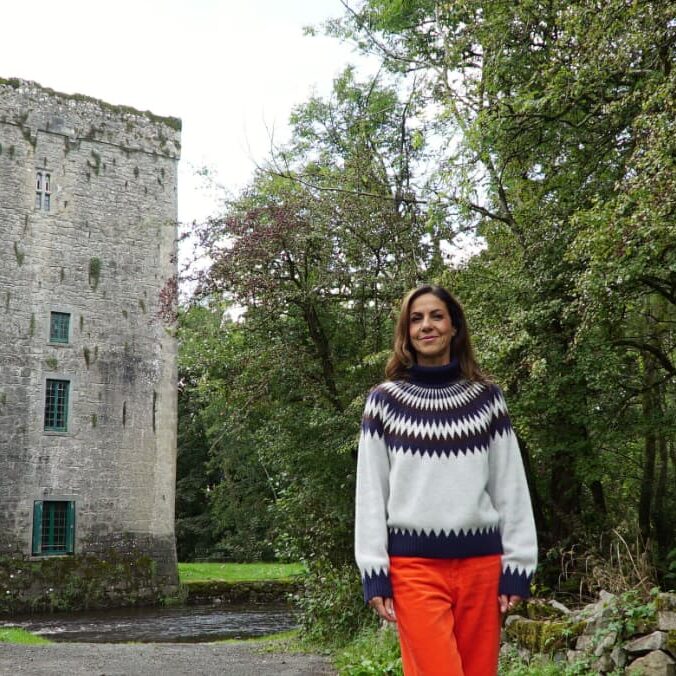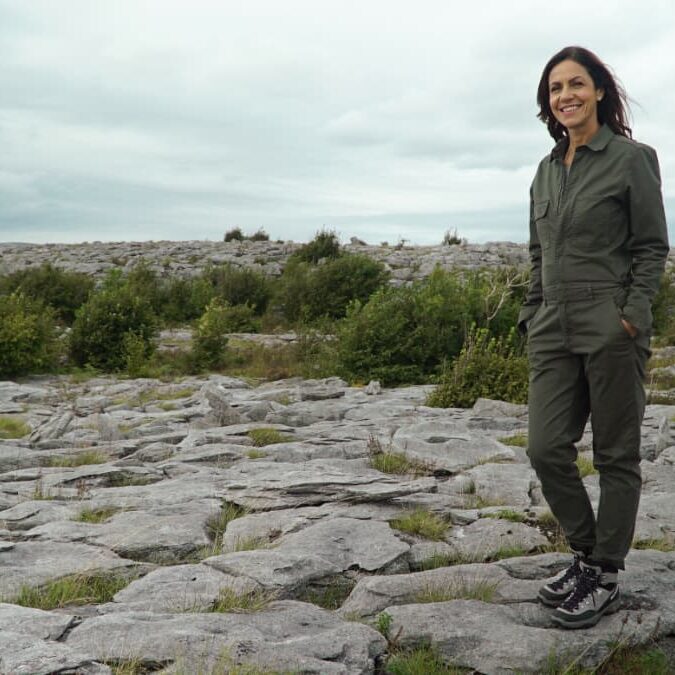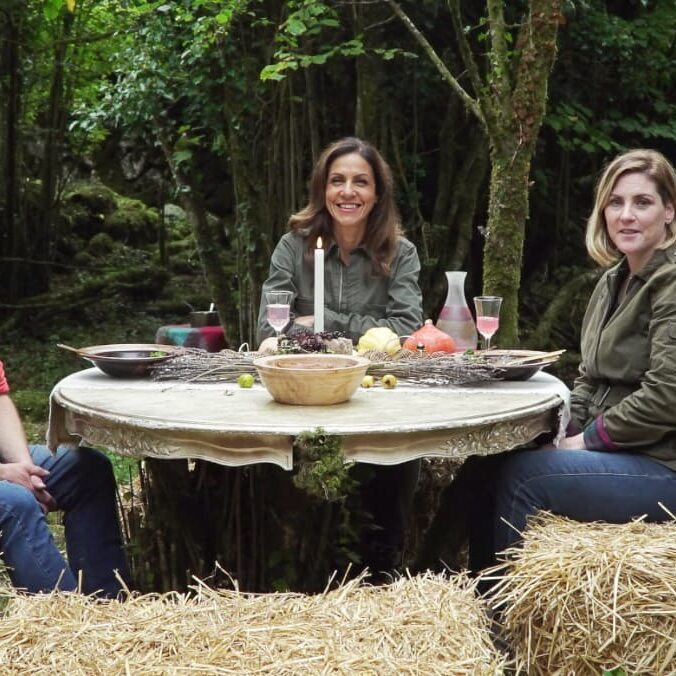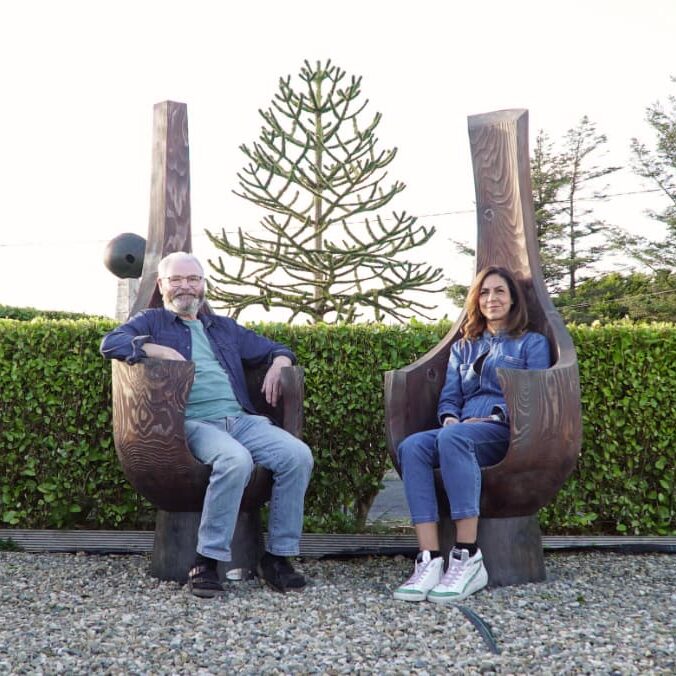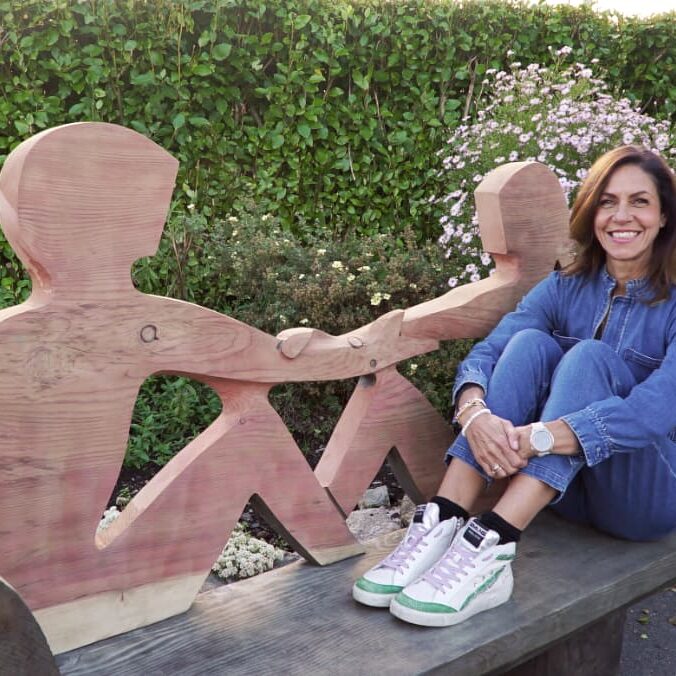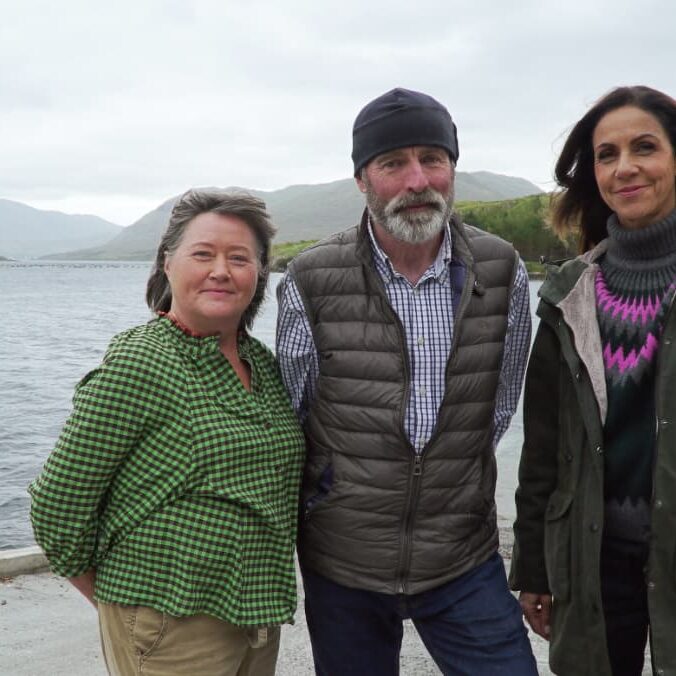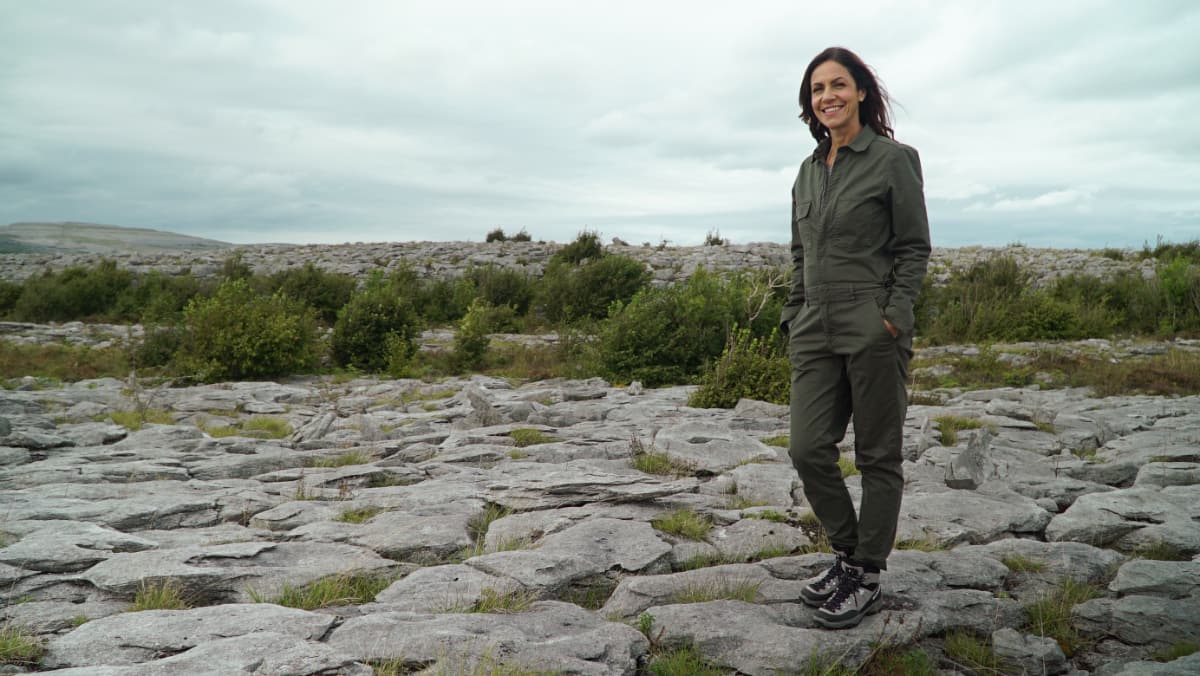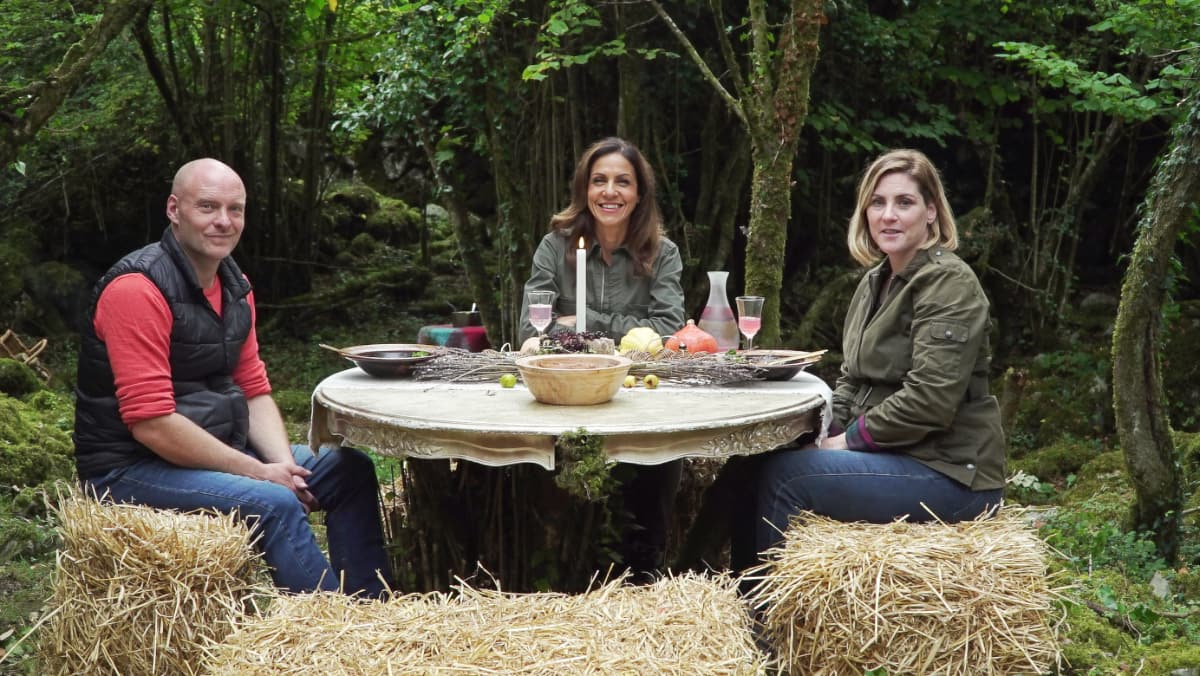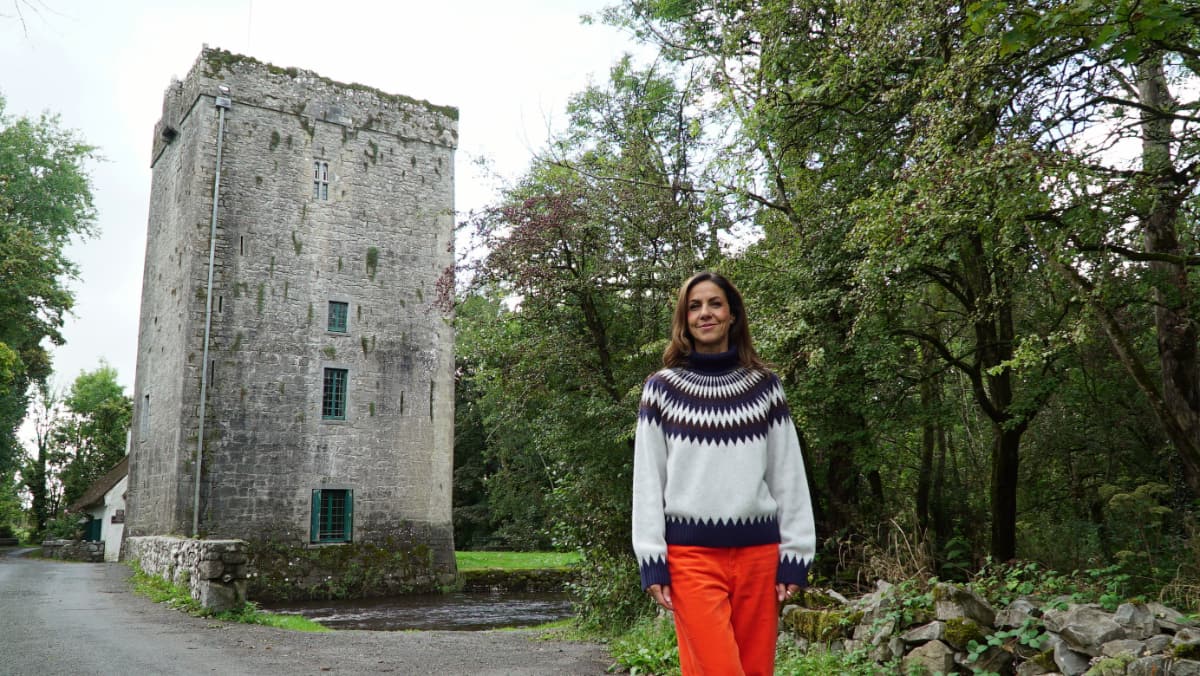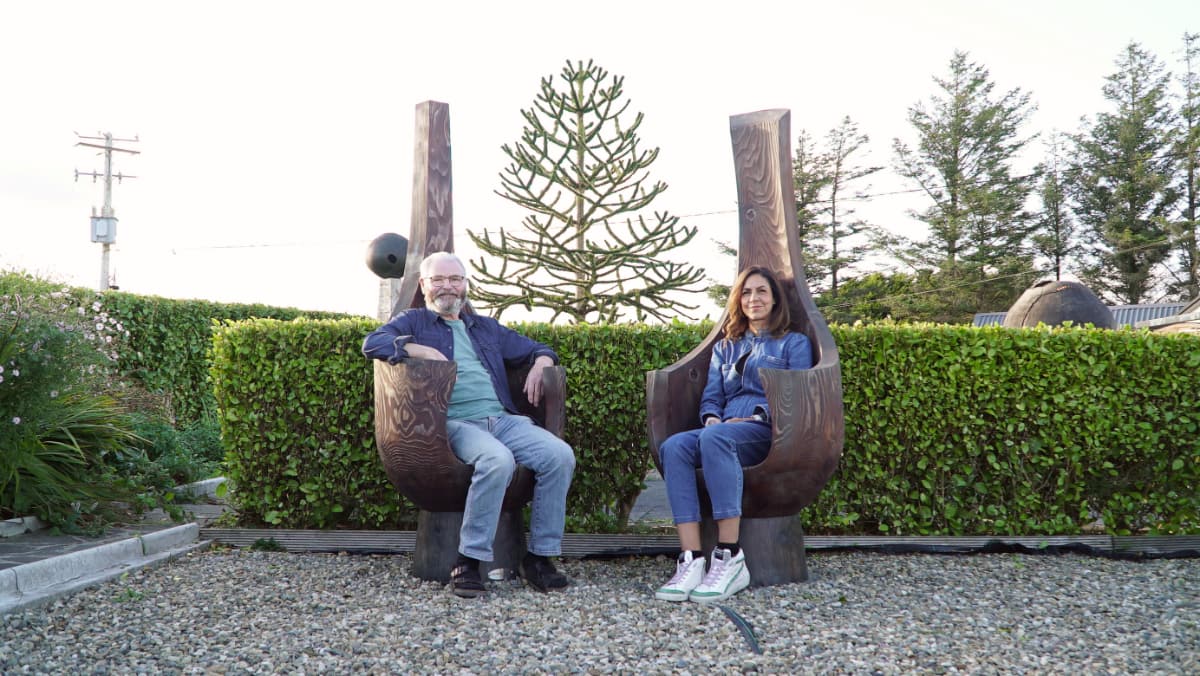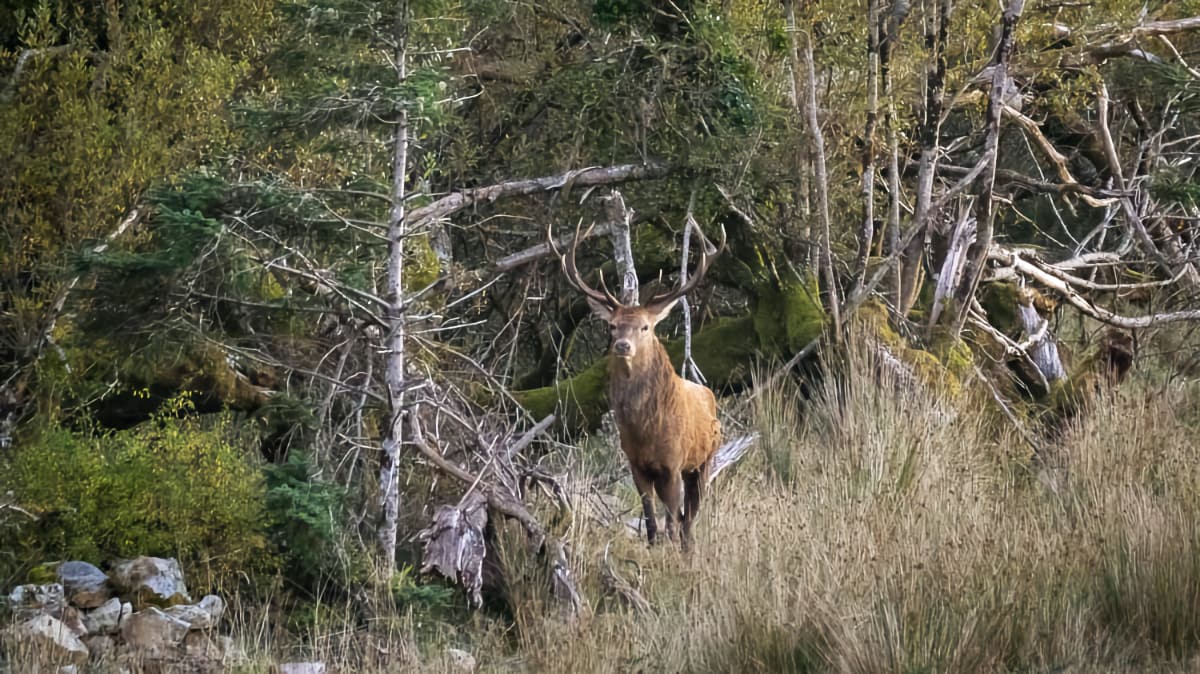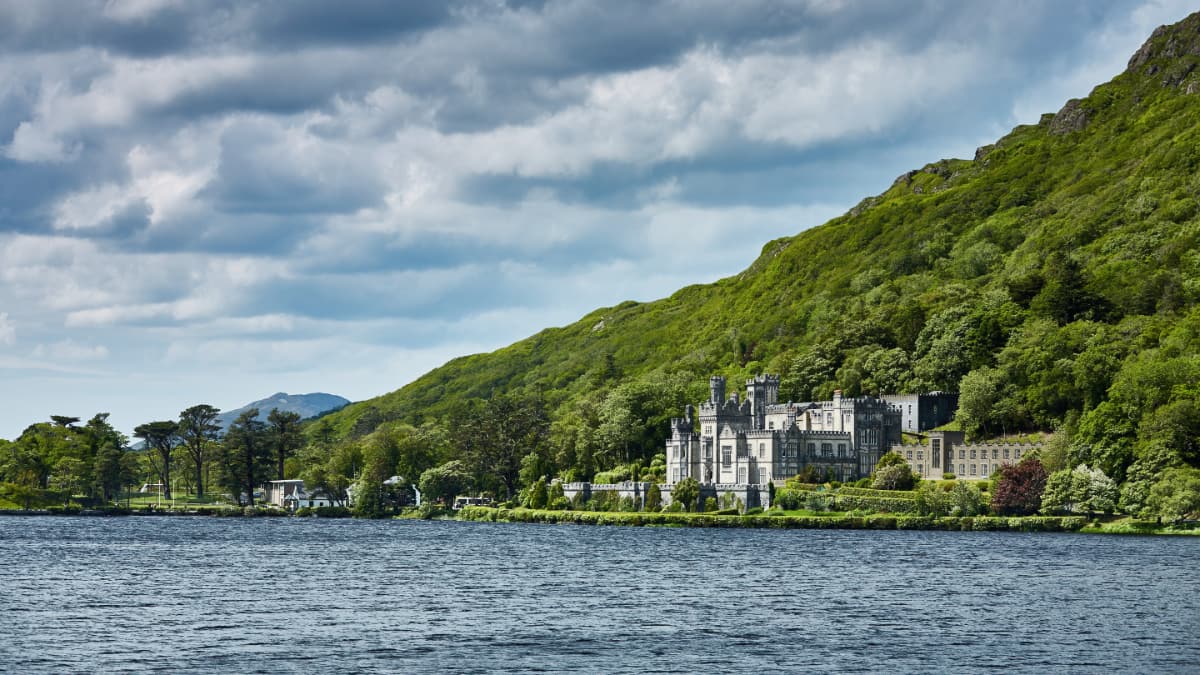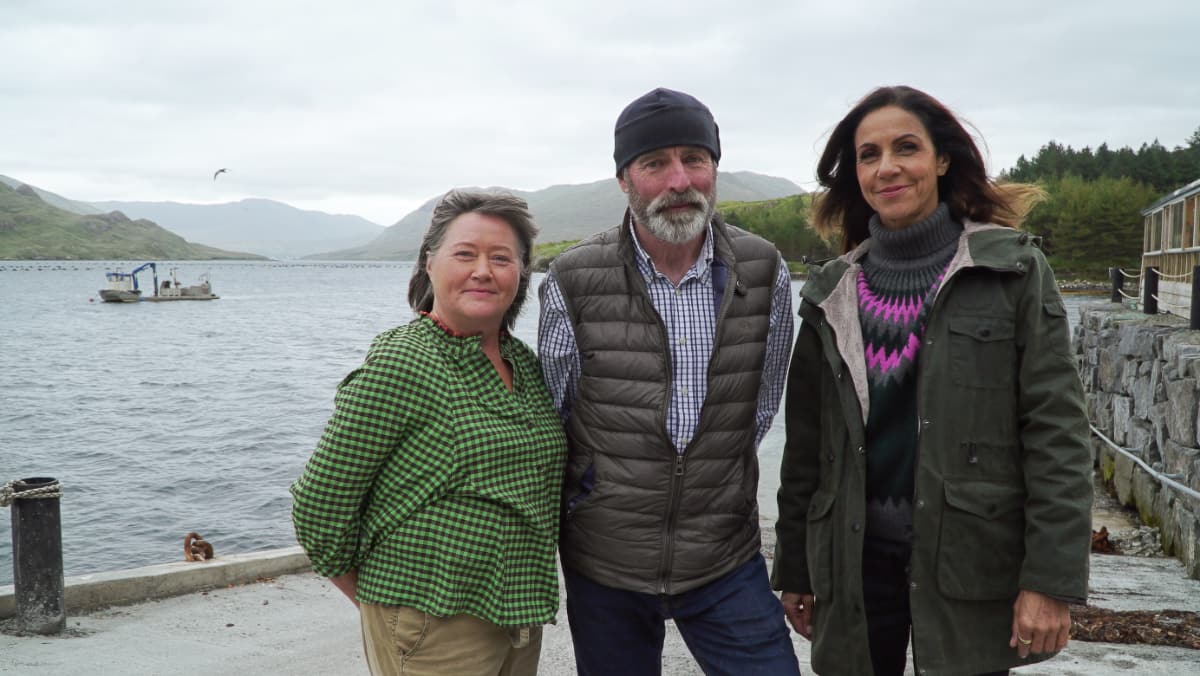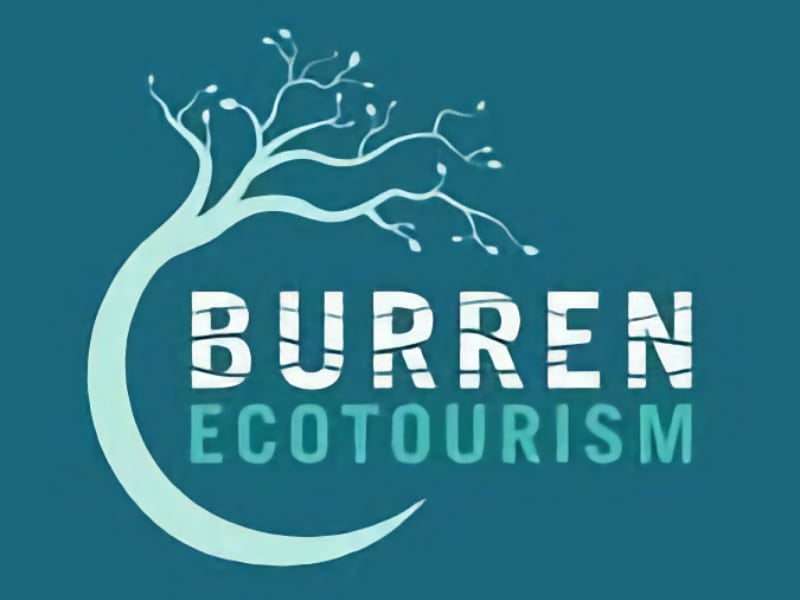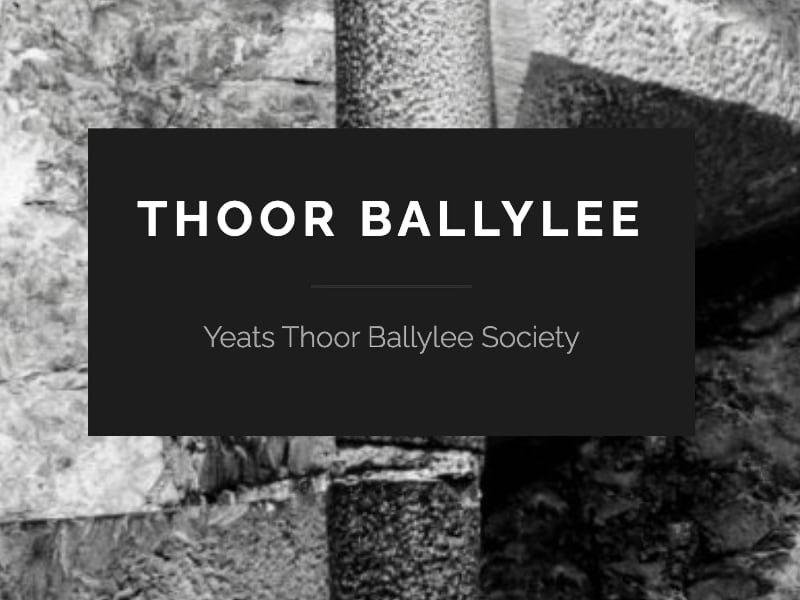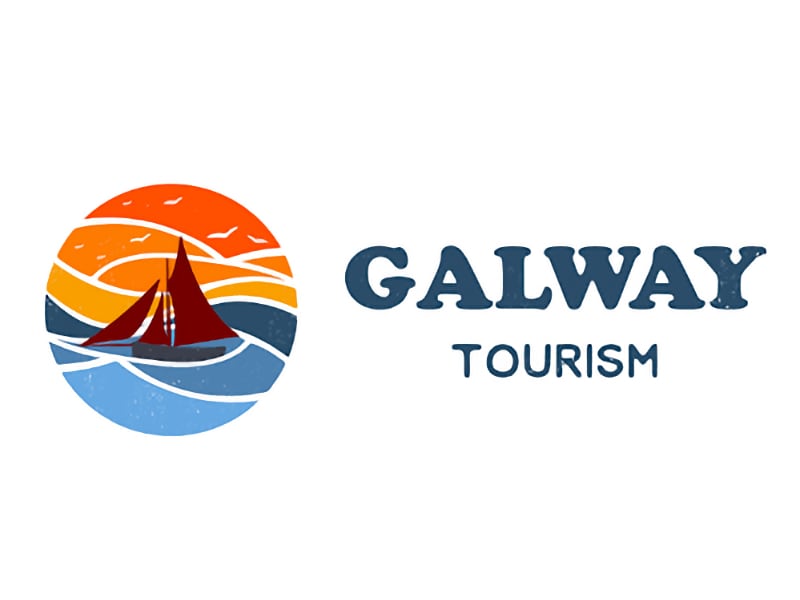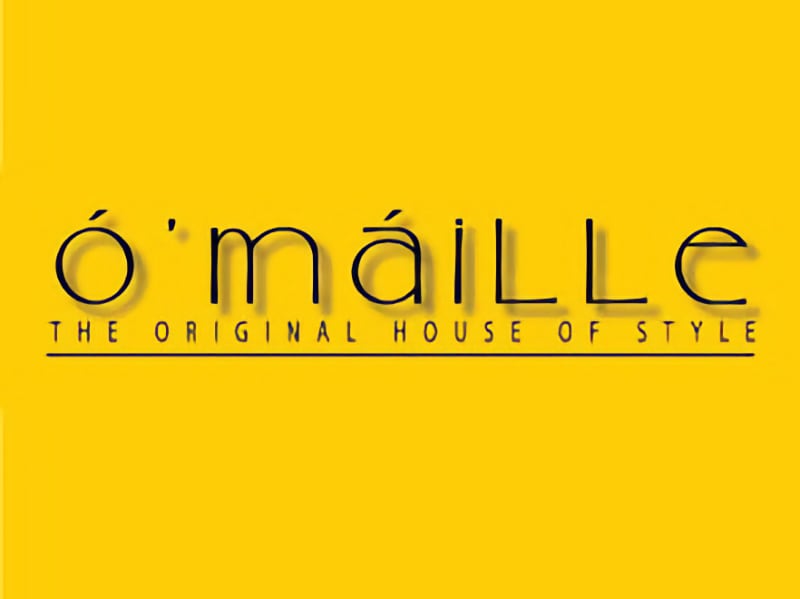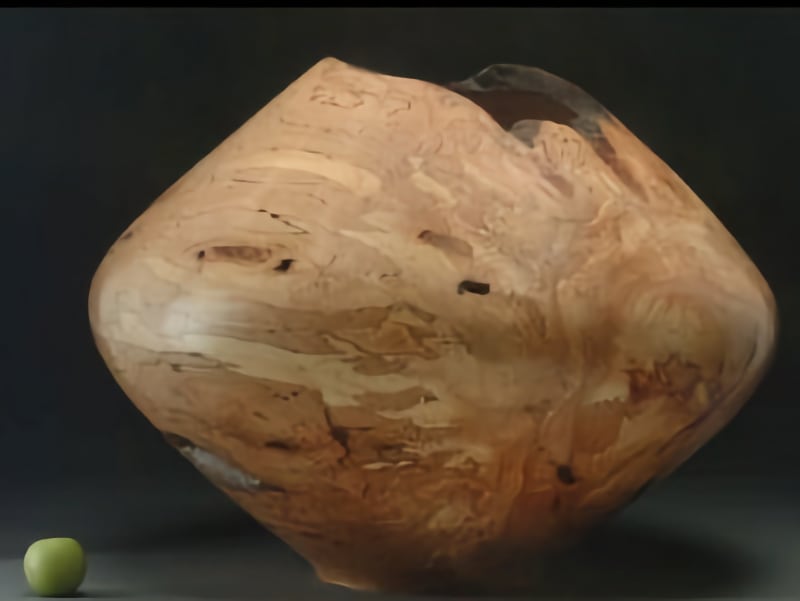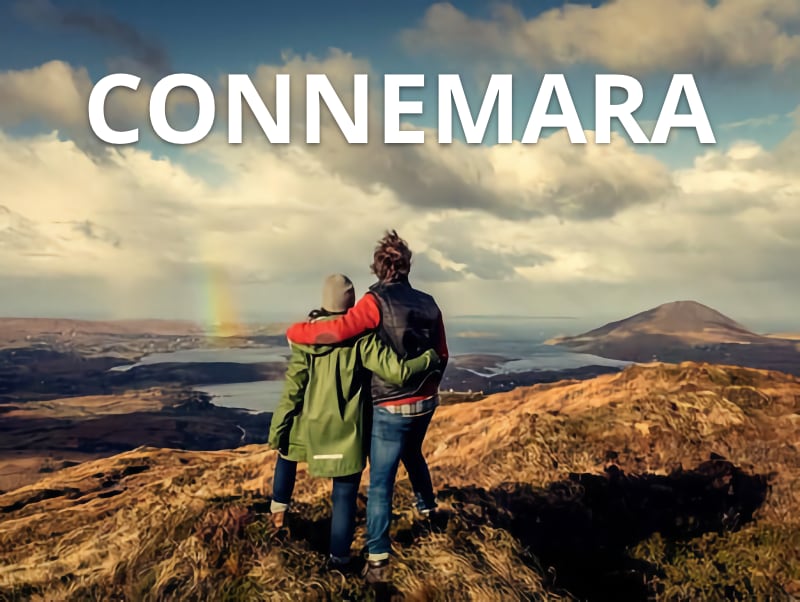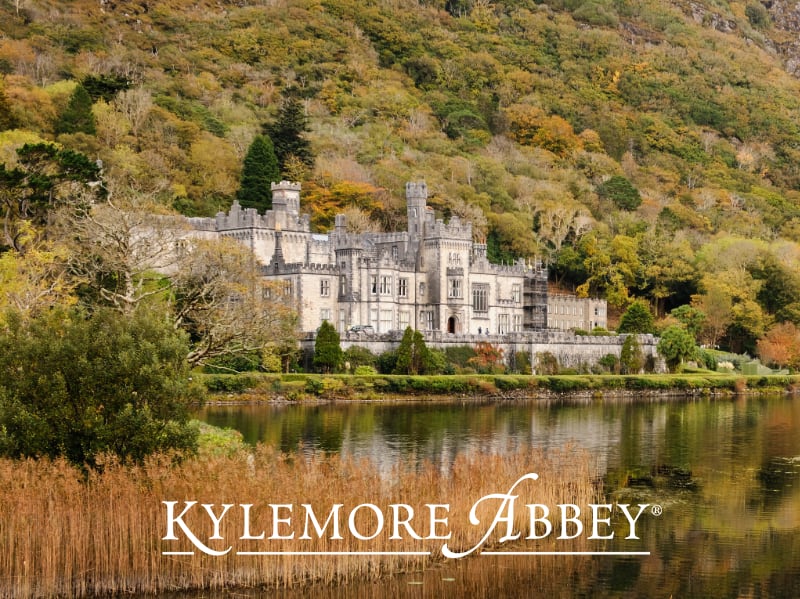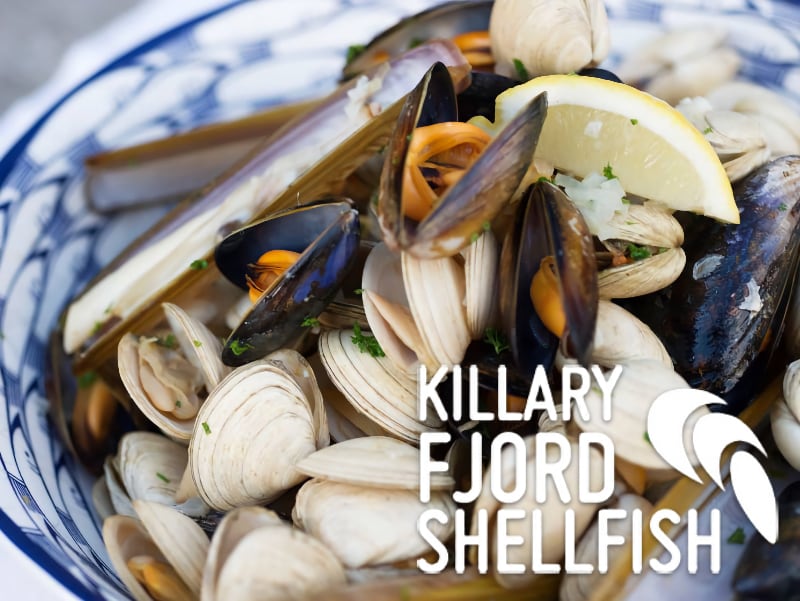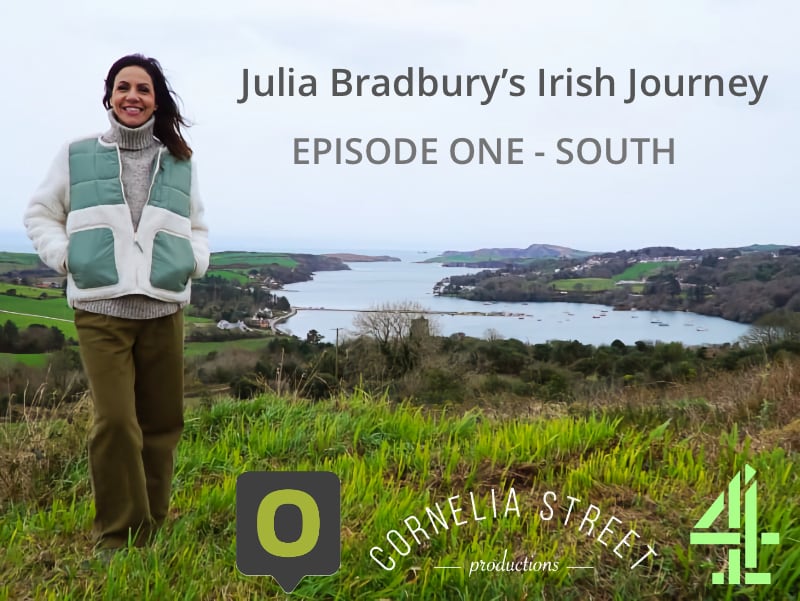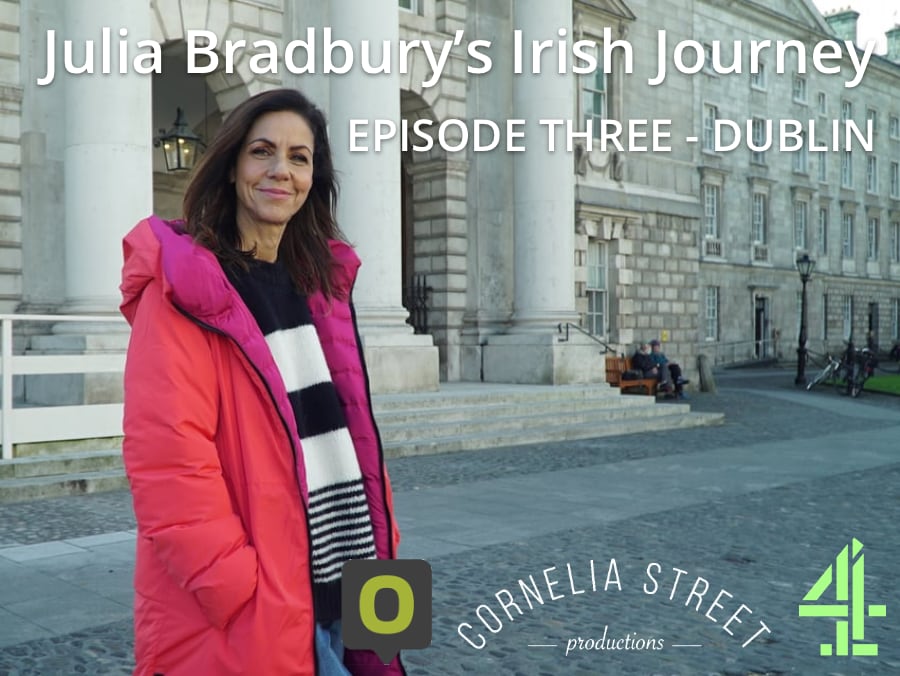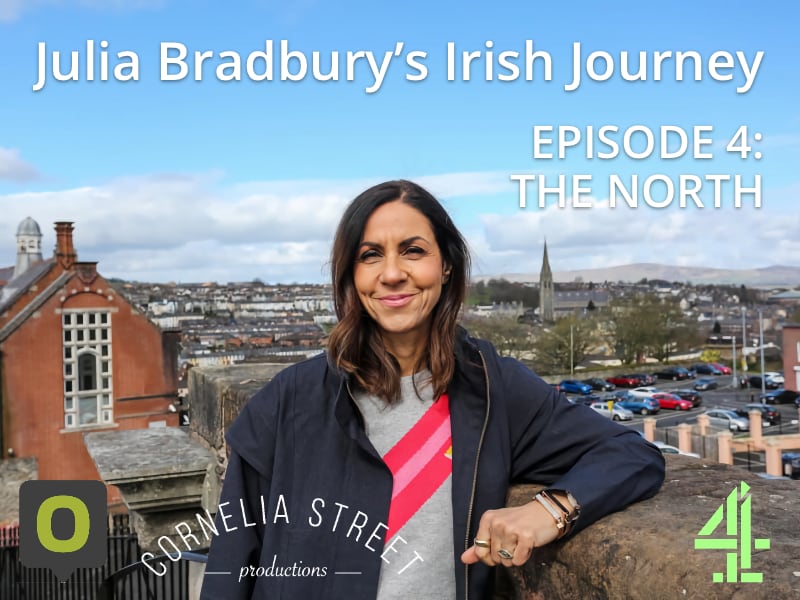West Ireland Walks
Julia revisits the country of her birth for the Channel 4 series Julia Bradbury’s Irish Journey. In the second episode, she visits west Ireland – the wild west, starting in County Clare before heading up into County Galway and then onto the southern tip of County Mayo.
Julia on location filming Julia Bradbury’s Irish journey …
First up is The Burren in County Clare. What looks initially to be a barren landscape, is in fact geological gold. It’s an entirely natural limestone pavement that is the largest rocky plain in the world that covers 530 square kilometres. Look closely though and you’ll find that 70% of all wildflowers in Ireland grow here!
It’s great land for cattle farming as the family of Bronagh and Cathal O’Rourke have been doing for many generations. They now offer tours of their land that give you an insight into not only the unique landscape of the UNESCO designated landscape of the Burren but also the ancient Irish Rainforest that also grows there.
This landscape has inspired many in days gone by. Tolkein’s Middle Earth is said to be based on the Burren. W B Yeats, the Irish poet, dramatist, writer and politician was so enamoured with this part of Ireland that he bought a cottage and tower in the Burren lowlands as a summer home. Being rooted in the ground, the tower reached up to the stars – something that appealed to his poetic side and it also inspired a collection of poems called The Tower. The Yeats Tower, described by Seamus Heaney as one of the most important buildings in Ireland, is now open to visit from Spring through to Autumn each year – giving you the opportunity to read his poems in the landscape that inspired them.
Our journey takes us on to Galway City. Sat at the mouth of the River Corrib on the Atlantic Coast. It was the number one trading port between Ireland, France and Spain. It was coined the Venice of the West due to the number of canals that were built to support the trade. Now the city is known for its art scene, having been a European City of Culture back in 2020.
The high street is full of local, quirky shops selling local products. One is Ó’Máille – a shop that is world famous for its Aran sweaters. Each is individually hand made by knitters in the area, some using stitches that are passed down through generations, never though written down. Their knitting is very much an art that is practical (wool is the answer to the cold) as well as being beautiful!
Heading west from Galway City, along the coastline of Galway Bay we’re headed to Spiddal. This is where Julia met the sculptor and wood turner, Liam O’Neill. He takes dead wood and with a good dose of celtic creativity, he turns them into some amazing works of art. One of his pieces played a part in the Northern Ireland Peace Process – being gifted by Bertie O’Hearn to Ian Paisley for his wedding anniversary.
Heading north, we’re off to the land of mountains and bogs. Connemara. The bogs here are Ireland’s forest – harbouring a huge range of species of flora and fauna, making it an ecosystem of vital importance. They’re incredible carbon sinks and a huge part of the heritage of Ireland. Whilst cutting the peat from the land for domestic purposes – this is something now done by around 1% of the population but is being phased out as is seen as being very controversial in current times.
Whilst there are many virtues to this land – you wouldn’t expect it to be somewhere great for growing fruit and vegetables. However one man, Mitchell Henry, decided to defy that and built a house with huge gardens designed to do just that. Kylemore Abbey with its beautiful walled gardens were created after the great Irish famine to show that the Irish could grow whatever they wanted and feed themselves – even in Connemara! In the 1920’s the Abbey was handed over to some Benedictine Nuns who have turned it into a major tourist attraction for the area – including a shop that sells soap and chocolate that the Nuns make on site.
Connemara stretches out towards the coast and Julia ends her tour of Ireland’s Wild West by heading up the coastline to Killary Fjord. This is Ireland’s only glacial fjord and one of only 3 inland fjords in the country. It marks the border between County Galway and County Mayo. Here, in the middle of the fjord, is a very special type of farm – a mussel farm, run by Simon and Kate Kennedy. It’s an extraordinary landscape that helps make this an ideal location for growing muscles on longlines submerged deep into the water. It takes 2 years for the muscles to grow and be ready for harvest. The nutrients coming down from the surrounding mountains into the water make these muscles particularly sweet – as Julia discovered!
This has been a wonderful journey through Ireland Wild West – where shall we head next?
Episode two – West (County Galway)
Julia Bradbury’s Irish Journey …


